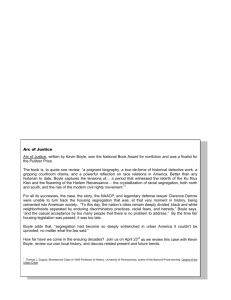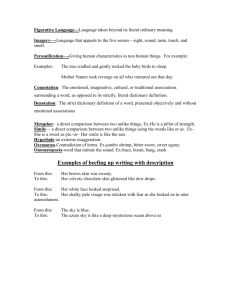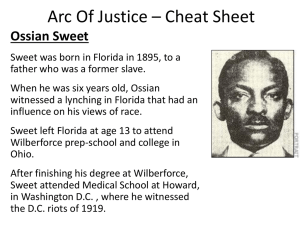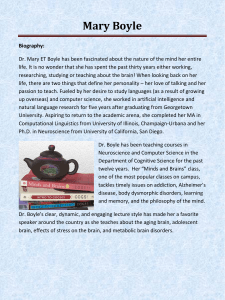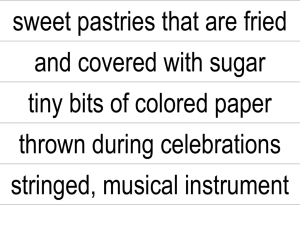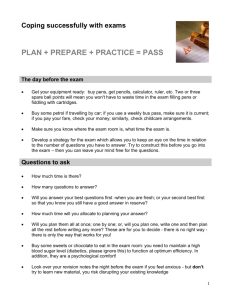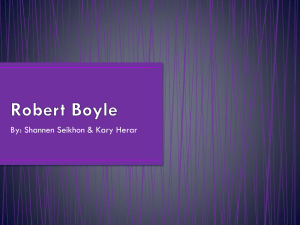Reading Questions Arc of Justice by Kevin Boyle 1. The
advertisement
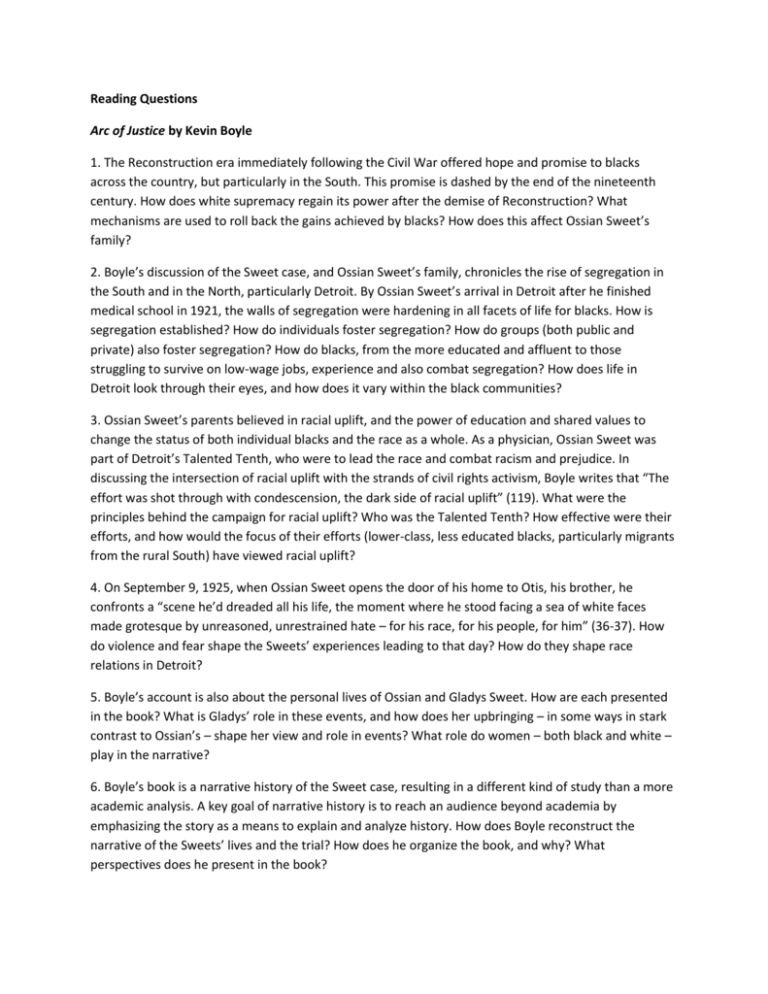
Reading Questions Arc of Justice by Kevin Boyle 1. The Reconstruction era immediately following the Civil War offered hope and promise to blacks across the country, but particularly in the South. This promise is dashed by the end of the nineteenth century. How does white supremacy regain its power after the demise of Reconstruction? What mechanisms are used to roll back the gains achieved by blacks? How does this affect Ossian Sweet’s family? 2. Boyle’s discussion of the Sweet case, and Ossian Sweet’s family, chronicles the rise of segregation in the South and in the North, particularly Detroit. By Ossian Sweet’s arrival in Detroit after he finished medical school in 1921, the walls of segregation were hardening in all facets of life for blacks. How is segregation established? How do individuals foster segregation? How do groups (both public and private) also foster segregation? How do blacks, from the more educated and affluent to those struggling to survive on low-wage jobs, experience and also combat segregation? How does life in Detroit look through their eyes, and how does it vary within the black communities? 3. Ossian Sweet’s parents believed in racial uplift, and the power of education and shared values to change the status of both individual blacks and the race as a whole. As a physician, Ossian Sweet was part of Detroit’s Talented Tenth, who were to lead the race and combat racism and prejudice. In discussing the intersection of racial uplift with the strands of civil rights activism, Boyle writes that “The effort was shot through with condescension, the dark side of racial uplift” (119). What were the principles behind the campaign for racial uplift? Who was the Talented Tenth? How effective were their efforts, and how would the focus of their efforts (lower-class, less educated blacks, particularly migrants from the rural South) have viewed racial uplift? 4. On September 9, 1925, when Ossian Sweet opens the door of his home to Otis, his brother, he confronts a “scene he’d dreaded all his life, the moment where he stood facing a sea of white faces made grotesque by unreasoned, unrestrained hate – for his race, for his people, for him” (36-37). How do violence and fear shape the Sweets’ experiences leading to that day? How do they shape race relations in Detroit? 5. Boyle’s account is also about the personal lives of Ossian and Gladys Sweet. How are each presented in the book? What is Gladys’ role in these events, and how does her upbringing – in some ways in stark contrast to Ossian’s – shape her view and role in events? What role do women – both black and white – play in the narrative? 6. Boyle’s book is a narrative history of the Sweet case, resulting in a different kind of study than a more academic analysis. A key goal of narrative history is to reach an audience beyond academia by emphasizing the story as a means to explain and analyze history. How does Boyle reconstruct the narrative of the Sweets’ lives and the trial? How does he organize the book, and why? What perspectives does he present in the book? 7. The book centers on a narrative and analysis of the events surrounding the Sweets’ attempt to take possession of their home on Garland Avenue, the shootings that occurred, and the trials that followed. While the charges the defendants faced focused on the death of Leon Breiner, Boyle writes that the significance of the case extended far beyond that issue: “Now the Talented Tenth was locked in combat against segregation itself, battling to preserve some shred of the promise that brought almost a million people out of the South in the previous ten years, to show that the North was different, to prove that there were places in America where Jim Crow would not be allowed to rule. This had become a fight over fundamentals” (196). How does the reader see this as Boyle’s narrative of the preparation of the case and the events in the courtroom, as well as the larger context of Detroit’s politics, unfolds? 8. Boyle quotes at length the opening and closing statements of attorneys on both sides of the case in both trials. How does both the prosecution and defense frame their cases? What arguments do they use? Do those change from the first trial to Henry Sweet’s trial, and if so, how? 9. The Sweet case becomes a part of the NAACP’s larger effort to combat racism and segregation through the legal system. What is their role in the trial? How does the trial fit the organization’s larger goals? How do the different players assess the significance of the case’s outcome after Henry Sweet is acquitted and charges against the other defendants are dropped?
